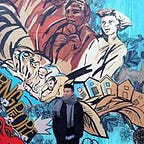Quantum Computing: A Primer (A16z mini-moocs notes)
Here’s the summarizing key points from A16z’s Frank Chen and the things that he had learned in doing field research on Quantum Computing. I have heard quite a bit on this from their podcast but never really understood the whole thing. This lecture is a good recap of the key points about quantum computing and answers the question of quantum computing.
Quantum states are more uncertain and can encode more information.
A little history of quantum computing
It starts with Richard Feynman. He was fascinated with the physics of very tiny small objects. At that tiny scale, the natural laws become different from the natural laws that we are familiar with.
All quantum physicists want to have a particle accelerators. These particle accelerators are extremely expensive and most physicists don’t have access to the real accelerators. However, these physicists do their experiments using simulations hosted on super computers.
Here’s a problem with studying quantum mechanics using simulations. It is too complex to be simulated using traditional computers. For example, in a simple experiment of simulating the positions of 1000 electrons. Assuming each electron has two states, this experiment would require the computer to simulate 2 to 1000th power different states. That number itself would become vastly too big to be handled by any modern computer. Richard Feynman, with regards to this problem, pointed out that nature seems to be keeping track of all of these different states themselves. He thought we could leverage how nature keep track of all of these states to our purpose in making these simulations.
At its core, Quantum computer is based on the fundamental properties of quantum mechanics. These computers are used to solve a different class of mathematical computations.
How does quantum computing work
Traditional computer use bits (2 states) to encode information and does boolean algebra based on bits. These two parts derive all our current traditional computers’ applications. The fundamental physical property used is that of electric conductivity.
By contrast, quantum computers use Qubits instead of bits. When observed the Qubits represent the same 2 states — positively charged electron and the negatively charged. However, the magic happens when the Qubits aren’t observed. They in fact represent the probability of the two states. (Shordinger’s cat comes into the picture to metaphorically represent this).
Qubit can be through of as a vector with direction and magnitude. Quantum gates implement quantum operations that’s not boolean but instead, uses vector based operations. The fundamental physical property used is that of quantum mechanics.
How quantum computing solve problems
Entering the phonebook problem.
The problem is that given a phone book of first name, last names and phone numbers. Phone numbers are stored using the last names. The traditional computer would solve the problem with by looking through all the entries until the phone number is found. Quantum algorithm solving this problem can take advantage of quantum algorithm and solve this a lot faster without iterating through the entire phone book entry by entry.
Grover designed an algorithm that can solve through this problem. The algorithm itself is called the Grover diffusion operator, where a set of vectors are passed through each of the quantum gates. In the context of the phonebook problem, the inputs are all the phone numbers in the phone book. After passing through each quantum gate, the vector’s magnitude and direction would be changed due to the vector operations that each gates apply on top of the input vectors. The idea behind finding the right phone number is then to let the correct vector containing the right phone numbers become bigger and bigger while the rest become smaller and smaller.
The below illustration should be able to explain this operation better but at the time of the writing, I didn’t quite fully understand the visualization.
Because of the applications of similar operations using quantum properties would help drastically reduce the computation time. Quantum computers can solve specific class of computation.
What makes quantum computers hard to build
#Challenge 1: Most quantum computers are built using super conducting material to minimize the disturbances from the outside world. Reaching these conditions, the operating temperature should be at 0.1 Kelvin, colder than inter-steller temperature.
#Challenge 2: The best quantum coherence time achievable is 100 microseconds. That’s not a lot of time where calculations can be performed. Each quantum computation requires 50 nanoseconds. Given 100 microseconds worth of coherent time, the computation can only provide 2000 calculations at a time, which is not a lot.
#Challenge 3: The energy difference between 0 and 1 state is only 10–24th power, which is incredibly small — hence harder to be applicable.
What can quantum computers do
#Benefit 1: deep learning networks can be trained a lot faster
#Benefit 2: finding the primer factors of very large number becomes easier using quantum computers. All modern encryption methods relies on the difficulty of finding prime factors. If quantum computing is used, it would render all modern security measures vulnerable.
#Benefit 3: finding new chemical catalysts using quantum calculation in the field of quantum chemistry.
#Benefit 4: finding new battery materials and battery chemistry.
Why now for quantum computing
A lot of the key ingredients for building quantum computing has become a lot easier. Today we have:
- Better Hardware
- Developer tools
- Better algorithms
Here are a list of companies that invest heavily on quantum computing
The original video is here: https://a16z.com/2016/06/26/quantum-computing-explained/
